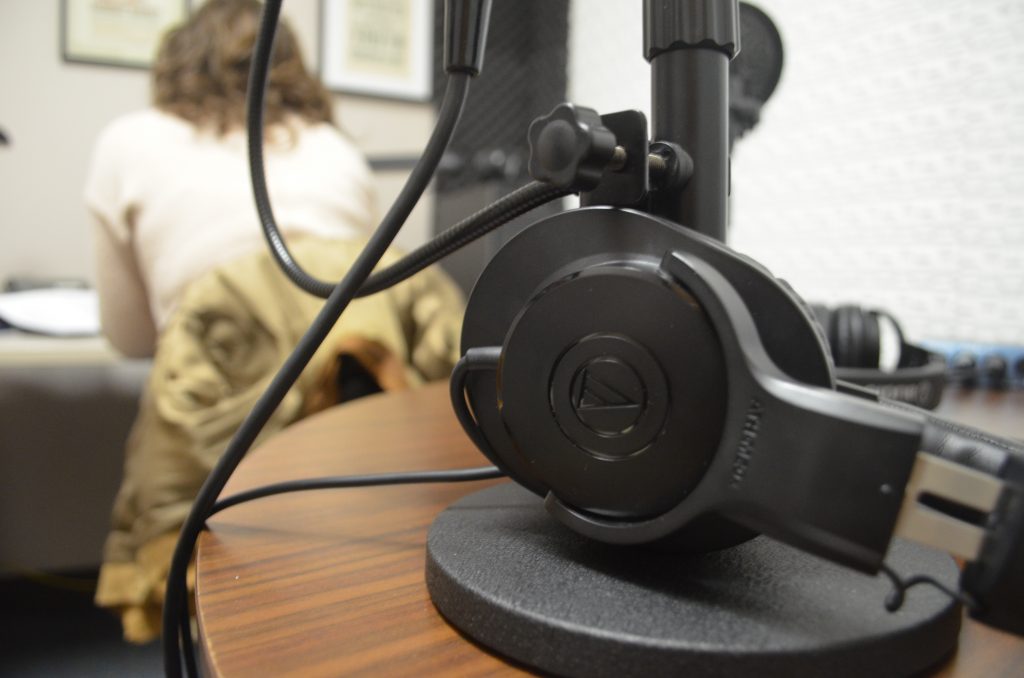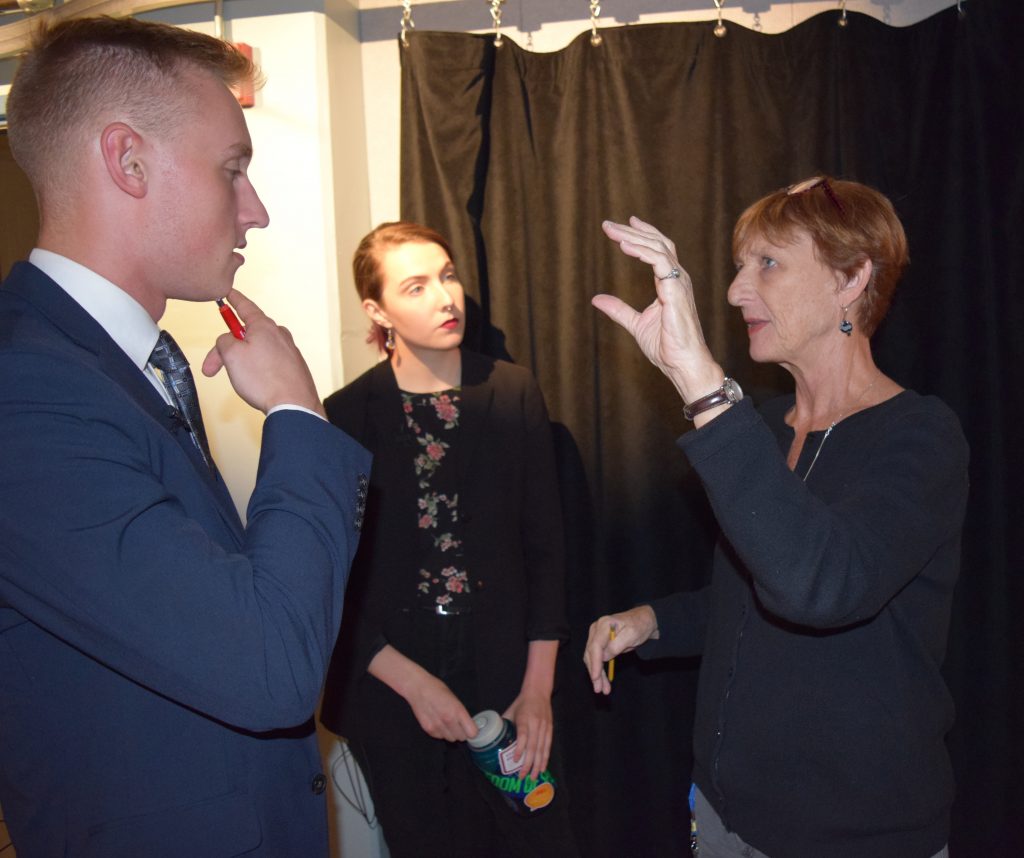
By Emily Knepple
In a world where media is constantly evolving, those at UW-Madison’s J-School are finding ways to keep up. Stories can be told in more than one way and students are getting the chance to practice different skills, as they learn how to tell an engaging story in different forms.
Distinguished Faculty Associate Pat Hastings, who has a background in both audio and video journalism, sees the relevance of exploring different aspects of reporting. In a digital age, journalists cannot ignore the changing media landscape around them.
Instead, they must learn ways to use it to their advantage and Hastings is teaching students to do just that. J456: Long Form Video and J457: Storytelling Through Sound, both taught by Hastings, are two courses that explore audio and video journalism more in-depth.
Long Form Video
In J456, students with different backgrounds in video are given the chance to practice and perfect their skills. Hastings shares that the course asks students to “look at how to take a concept, a story idea, and tell it visually.” Video journalism requires creators to get creative with what they want their audience to learn; journalists must ask how and what they want to visualize.
The course is split into two halves. At first, students learn how to shoot video and get a better understanding of how our eyes see things. Students also must learn the writing style that makes video journalism different from print.
Once students learn these skills, they work toward a final project: a short documentary on a topic of their choice. The course has a companion website, which includes links to the documentaries, as well as some information about student inspiration.
J456 concludes with a livestream program. “It’s similar to a young filmmaker talk show, where we have a host that interviews the students and then we run a snippet of their video,” said Hastings. “We talk about student motivation and the piece itself.”
Students finish the course with a stronger storytelling skillset, as well as a real, tangible work that can be used for a portfolio. “All the work they do is their own, the piece is entirely up to them,” shared Hastings.
Storytelling Through Sound
Similar to J456, J457 explores another alternative form of storytelling: audio journalism. Hastings shares that she launched this course when the crime podcast Serial became popular.
Throughout the semester, students explore the challenges around telling a story only through sound. Differing from print, interviewing for an audio story requires an alternate perspective. Journalists have to consider the types of questions they ask because soundbites are so crucial.
“It’s a lot different than the straight laundry list of questions,” Hastings says.

J457 encourages students to get a grasp on how one can communicate solely through sound. If done correctly, different forms of media can mimic the detail that print usually gives.
“A small snippet of sound can say as much as a paragraph,” said Hastings.
The end-goal of J457 is to produce a multi-part podcast that will be aired on local radio. This year, students are working on a project that is set to air on WSUM 91.7 FM, the UW-Madison student radio station. Hastings also shares that the stories are set to be published on Spotify and Apple, giving students real exposure.
Adapting to Remote Learning
Both J456 and J457 illustrate how the J-School is continuing to look at different ways of telling stories. These branches of reporting are proving to be increasingly important in a society saturated with news.
In the wake of COVID-19, every industry has had to pivot. Like educators, journalists are also trying to find unique ways of engaging viewers with content.
Having a background in both, Hastings shared that when she talks about the impact of COVID-19 on journalism education, “video classes tend to take the biggest hit because they’re very hands-on.”
Hastings alludes to teaching students how to use the equipment and the difficulty in diagnosing a problem remotely.
“This summer, I created videos on how to put batteries in cameras,” said Hastings. But no matter how many videos were created, the responsibility of practicing with video is more on the students than ever before.
On top of practice, students creating documentaries are now tasked with unique challenges, surrounding the nature of quarantine, interviews and dealing with Zoom snapshots for content.
The latter speaks to a broader issue Hastings touched upon when discussing the future of alternative journalism in a post-pandemic world.
Remote work is sure to stay, she shared. Additionally, the nature of interviews has undergone a shift over the past year. “You always want to go to an interview and do it in person, being out in the field and gathering news, I hope that doesn’t change,” said Hastings.
Avenues like social media have also influenced video and audio journalism in ways that go far beyond what one can learn in the classroom. Over the past few years, Hastings shared that the industry has seen the art of filming and creating stories become a hobby shared online, with little professional direction. A more lax approach to an art that sits central to the journalism industry is slowly becoming the norm, Hastings anticipates that continuing.

She also shares that she hopes the newsroom doesn’t go away.
“If you’re sitting with five colleagues in the newsroom and you say, ‘Hey does anyone know about this story or this source?’, that banter and that access to the knowledge base that reporters have even within themselves is harder to do when you’re remote,” said Hastings.
Despite the challenges that lie ahead for the journalism industry, Hastings and other J-School faculty are rising to the challenge of creating innovative thinkers for the future of journalism. The work being done in courses like J456 and J457 are not only preparing students for what awaits, but giving them a chance to gain real exposure and experience in the industry.
“We’ve given our students the opportunity to be more visible to local news directors and other professionals because they see their work streamed live,” said Hastings.